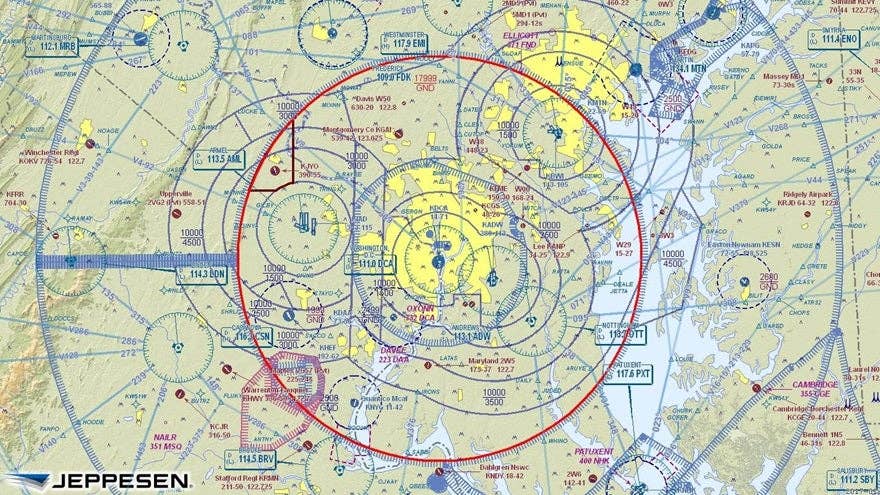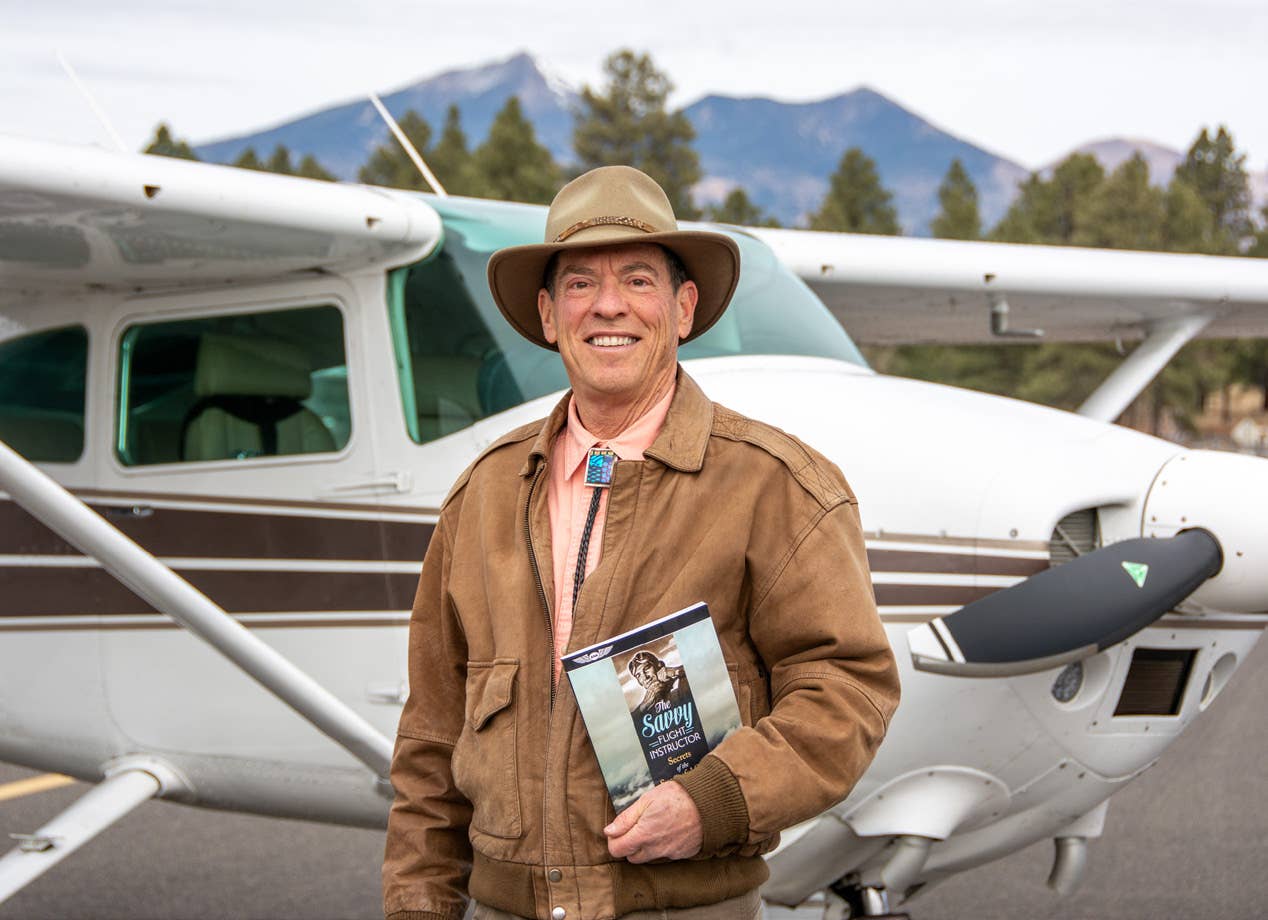Remembering 9/11 and Lessons Learned
Hopefully, the aviation industry will not lower its collective guard as we get further away from infamous terrorist attacks.

On 9/11, temporary flight restrictions (similar to the one shown here) popped up over military bases and other potential targets. [FLYING file photo]
Twenty-three years ago today, I was driving to work, listening to news radio when the announcer said that an airplane had struck one of the towers at the World Trade Center (WTC) in New York City. I was a reporter at an aviation magazine and my first thought was, "I will be writing about this today."
As I pulled into work the announcer came back on, sounding surprised as she said a second airplane had struck the other tower at the WTC.
I rushed into the break room and turned on the television just in time to see the video of the second airliner hitting the second tower. When the announcer came on saying that the FAA was grounding all aircraft—calling it a "ground stop all aircraft"—I immediately called my father to let him know I was safe. I was a week out from my commercial check ride and flying quite a bit. Dad addressed me by my full name (when you hear the middle one, it means business) and ordered me to stay on the ground.
If you were old enough on September 11, 2001—especially if you were in aviation—that day is probably etched in your memory as well. Airline crews were diverted and not told why until after they landed. People gathered around radios and televisions to listen for information. It was a time of great uncertainty.
Temporary flight restrictions popped up over military bases and other potential targets. Barricades were put up at some airports. Ramps became crowded with transient aircraft that landed wherever they could. It was eerily quiet. I live near a U.S. Air Force base and even they weren't flying.
There was a 30 nm no-fly zone around Seattle-Tacoma International Airport (KSEA). Basically, if your airport was under the Mode C veil, you stayed on the ground or took a risk far greater than getting in trouble with the FAA. Weather briefings stated that "deadly force was authorized."
In the weeks that followed, we learned a "new normal." We filed IFR flight plans on VFR days just for the privilege to head out to the practice area and back. On the day of my commercial pilot check ride, I was using a pink highlighter to color in the newly created TFRs over Port of Bremerton, Washington, and Naval Submarine Base Bangor on a brand-new sectional when I was ramp checked. It was early Sunday morning, and the FAA inspector wanted to know what I was doing out there so early.
Within two weeks of the attack, the number of CFIs at the airport doubled. It was the boomerang effect as those shiny new airline jobs they had all reported to a month earlier were gone, as so many airlines shut down or scaled back.
A few weeks after the attack, CFIs were allowed to fly and some flight schools allowed something called "supervised solo." It seemed odd that students were allowed to fly and the certificated pilots could not unless they were with a CFI or instrument rated, current, and on an IFR flight plan. And you had to have current approach plates and sectionals appropriate to the mission because ramp checks were still happening.
This created a challenge when we needed to move the company aircraft 14 nm to another airport so it could undergo its annual inspection. My employer was definitely not IFR current, but I was, so technically I was to be PIC on this flight. We didn't have a current IFR sectional. I had my certificates with me but not my gear bag, which was still at home, and we had to move this aircraft because of a tight weather window.
While he preflighted the aircraft, I ran into the local FBO to see if they had the sectional we needed. The guy behind the counter laughed and said no, so I had better turn into a CFI right quick.
I ran across the parking lot to the newly opened pilot supply shop. It had what I needed, and because there was just a week left before the sectional expired, Tom, the fellow that ran the supply shop, didn't change me for it.
A few years later, I would be working at that school as a CFI, and Tom would become a friend.
Flight School Fallout
Following reports that the terrorist hijackers trained at U.S. flight schools, there were people who called for them to be shut down for good. The anti-airport types decried aviation as a threat. Thank goodness the hysteria died away after a few weeks, although a few years later we did get the requirement to verify a trainee's citizenship and prove we had done this by giving them the TSA endorsement.
The endorsement requires verification of the applicant's citizenship. For those born in the U.S., the FAA approved language reads: "I certify that [insert student's name] has presented me a [insert type of document presented, such as a U.S. birth certificate or U.S. passport, and the relevant control or sequential number on the document, if any] establishing that [he or she] is a U.S. citizen or national in accordance with 49 CFR 1552.3(h). [Insert date and instructor's signature and CFI number.]"
A record of the endorsement is made in the instructor’s logbook or other means used by the instructor to document flight student endorsements. CFIs are required to keep these records for five years.
In lieu of this, the FARs said the flight training provider "may make and retain copies of the documentation establishing an individual as a U.S. citizen or U.S. national." So photocopies of their passports or birth certificates may be on file at their school.
In May the TSA tweaked those rules. TSA awareness training is now required every two years, instead of annually.
The rules for training foreign pilots were also adjusted as now foreign nationals can use TSA Precheck and Global Entry in lieu of going through the old TSA approval process. In addition, a security coordinator must be named for a Part 141 school. If the training is under Part 61, the CFI who gave the endorsement is considered the contact person.
My fellow CFIs, please find out what method your flight school utilizes. I say this because I recently encountered a batch of freshly minted CFIs who insisted "no one does the TSA thing" anymore. I was pretty sure something got lost in translation.
It turns out the schools they attended—larger academy types—did not do the individual endorsements in logbooks. They had never heard about the CFI providing the endorsement. They were surprised when I told them how we did it "back in the day."
I can't help but be concerned that the aviation world may be lowering its collective guard as we get further away from 9/11. The things we were taught to watch for, like people who also wanted to know how to do cruise flight but not take off and land, or who presented large amounts of cash and wanted concentrated training—like six a hours a day—may now be viewed as an opportunity rather than a red flag.
I just hope the aviation industry doesn't forget what we learned so many years ago.

Sign-up for newsletters & special offers!
Get the latest FLYING stories & special offers delivered directly to your inbox






